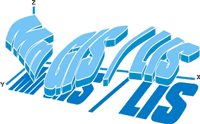Annual Conference
Call
for Papers
About the Conference
Conference at a Glance
Conference Sessions
Entertainment
General Information
Highlights
Hotel
Information
Registration
Form PDF
Online Registration
Preliminary Program PDF
Duluth Visitor Info.
Workshops
Exhibitor Information
Consortium Bylaws
Consortium Services
Contact Information
Current Board Members
Data Contacts
Educational Links
From The Chair
GIS/LIS Announcements
GIS Jobs Listings
GIS/LIS Events
GIS Resources
MN GIS/LIS Honor Roll
Newsletter
Scholarship Fund
Surveys
User Groups |
|
Poster
Presentations
Thursday October 5,
5:00 - 7:30 pm
The following poster presentations will be on display in the Exhibit Hall
throughout the conference. Poster presenters will be on-hand to answer questions
regarding their posters during the Vendors Reception and Poster Session on
Thursday, October 11, from 5:00 – 7:30 pm.
- A Comparison of Trade Area Models for a Small
Business, Christina M.
Brandel, College of St. Catherine, Robert Werner, University of St. Thomas
- A New State Standard for Coding Cities and Townships in
Minnesota, Mark
Kotz, Metropolitan Council, Chris Cialek, LMIC
- Action Research Examples: GIS for Community
Groups, Carol Gersmehl,
Andras Bartal, Macalester College
- Comparing and Contrasting Remote Sensing Technologies for Resource
Assessment Along a Riparian Corridor, Keith LeClaire, Mike Walker, Byron
Williams, Teri Alberico, US Army Corps of Engineers
- Comparing Past and Present
Landscapes, Tim Wallace, Carol Gersmehl,
Macalester College
- Don't Duck Metadata! Resources to Help You Document your GIS
Data, Nancy
Rader, Chris Cialek, LMIC
- GIS as a Tool for Watershed Education Within a Collaborative
Framework, Todd
Lusk, Dakota County, Kevin Biehn, The Kestrel Design Group
- GIS Utilization of Historic Timberland Survey Records -- The
Conclusion, John
Hoshal, LMIC
- GIS/GPS Use on the Fond du Lac
Reservation, Tim Krohn, Fond du Lac
Reservation
- Historical Forest Record Keeping with
GIS, Karen V. Walker, Thomas E.
Burk, Ronald W. Severs, University of Minnesota
- Integrating GPS-Enabled Equipment into
Operations, Chris Stevens, Nancy
Read, Metropolitan Mosquito Control District
- Lakeshed Assessment and Management
Project, Sue McGuire, Greg Berg,
Dennis Fuchs, Rob Sip, Stearns County, Dan Lais, MN DNR
- Minnesota Lake Water
Clarity, Leif Olmanson, Marvin Bauer, Patrick
Brezonik, University of Minnesota
- MN/DOT Public Land Survey Corner
Database, Michael Cannon, MN/DOT
- Potential Conservation Corridors and Habitat Patches in the Blue Earth
River Watershed, Pete Knutson, Cathi Fouchi, MN DNR
- Present and Predicted Landscape Change in the Twin Cities Metropolitan
Area, Fei Yuan, Kali Sawaya, Marvin Bauer, University of Minnesota, Bryan
Pijanowski, Brad Shellito, Michigan State University
- Spatial Analysis of Hydraulic Infrastructure
Data, Thomas Martin,
MN/DOT
- Stream Mapping Using a Remote Control Model
Helicopter, John Bonde,
Natural Resources Research Institute
- Twin Cities Regional Planned Land Use Database 2020: Policy
Implications, Paul E. Hanson, Metropolitan Council
- Use of IKONOS Imagery for Assessment of Lake Water Clarity in Eagan,
Minnesota, Leif Olmanson, Marvin Bauer, Patrick Brezonik, University of
Minnesota
- Using GIS in Landscape
Planning, Chad Skally, Minnesota Forest
Resources Council
- Using GIS to Facilitate Targeted Blood Lead
Screening, Mary Hagerman,
Steve Scott, Dakota County
- Using GIS to Locate, Analyze and Map Feedlots in
Minnesota, Scott
Freburg, Kristina Tierney, LMIC
- Where Is It, and Does It Matter? Predicting In-Stream Conditions from Land
Use at Varying Distances from the Channel, Tom Hollenhorst, Lucinda B.
Johnson, Jeff Schuldt, Carl Richards, George Host, Natural Resources
Research Institute
- Wolves in the Superior Mixed
Forest, Jan Slaats, The Nature Conservancy
|
